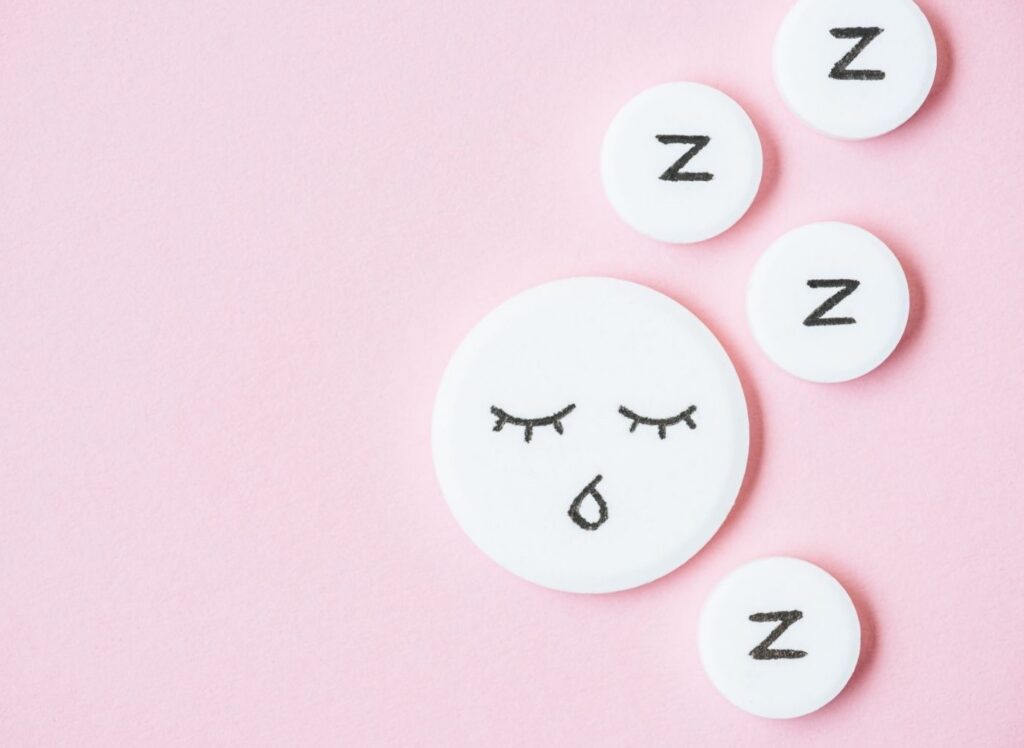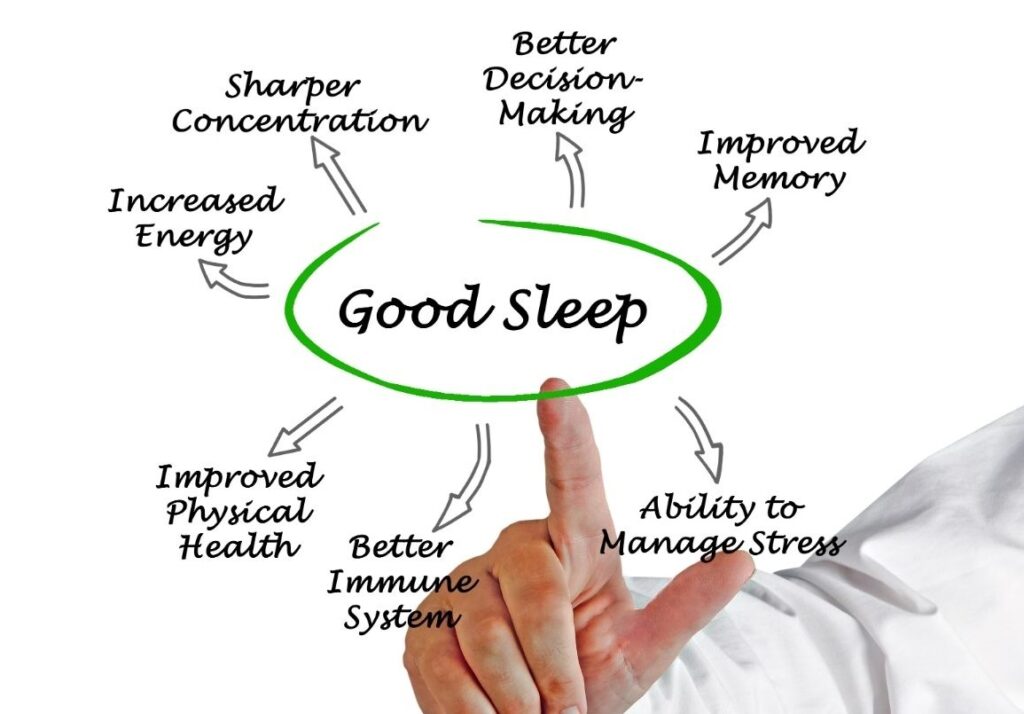

Quick Overview
Core sleep is the most restorative part of the sleep cycle, including deep sleep and REM stages, vital for physical repair, cognitive function, and emotional balance.
This blog will walk through:
✅ Definition and importance of core sleep versus total sleep
✅ Typical duration and examples across different ages and sleep patterns
✅ Scientific facts on how core sleep supports memory, immunity, and energy restoration
✅ Effects of missing core sleep and its link to sleep disorders
✅ Tips to maximize core sleep, including routines, sleep-friendly environments, and managing disruptors
✅ Common myths and misconceptions about core sleep and total sleep requirements
Core sleep, the most restorative portion of our sleep cycle, is crucial in rejuvenating the body and mind. Sleep is vital for physical and mental health, yet not all sleep is equal. This blog explores the definition, examples, and facts about core sleep, offering insights to help you improve sleep habits.
What is Core Sleep?
Definition of Core Sleep
Core sleep is the most vital portion of your sleep cycle, encompassing the deep sleep and REM (Rapid Eye Movement) stages. These phases are critical for physical restoration, cognitive function, and emotional regulation. Core sleep allows the body to repair tissues, consolidate memories, and reset energy levels, making it the foundation of overall sleep quality.
How Core Sleep Differs from Total Sleep
While total sleep includes the entire time spent in bed, core sleep focuses specifically on the restorative stages. For instance, a person may spend 7-8 hours in bed but achieve only 4-5 hours of core sleep, depending on sleep efficiency. Unlike lighter stages of sleep, which primarily prepare the body for deeper rest, core sleep directly impacts how refreshed and functional you feel upon waking.
Importance of Core Sleep
Core sleep is indispensable for maintaining optimal health. During this period:
- Memory Consolidation: The brain organizes and strengthens memories from the day.
- Immune Support: The body produces immune-boosting substances like cytokines.
- Energy Restoration: Cellular repair and energy replenishment occur, ensuring physical readiness for the next day.
Even long hours in bed can leave you feeling fatigued and unfocused without sufficient core sleep, highlighting its irreplaceable role in overall well-being.

Examples of Core Sleep
Duration of Core Sleep
The amount of core sleep needed varies by age and individual circumstances:
- Adults: Typically require 4-5 hours of core sleep out of 7-9 total hours.
- Children and Teens: Need more core sleep due to rapid physical and cognitive development.
- Seniors: While overall sleep requirements decrease slightly, the quality of core sleep becomes increasingly important.
Core Sleep in Polyphasic Sleep Patterns
Polyphasic sleep schedules, such as the Uberman or Everyman methods, often revolve around maximizing core sleep during shorter total sleep periods. For example:
- An individual may achieve core sleep during a 3-hour nighttime rest supplemented by strategic naps.
- Core sleep ensures they receive the necessary restorative benefits even with unconventional schedules.
Real-Life Scenarios
In various situations, individuals may prioritize core sleep due to limited opportunities for rest:
- Shift Work: Night-shift workers often rely on achieving core sleep during non-traditional hours.
- Travel: Jet lag and time zone adjustments make core sleep crucial for maintaining functionality.
- High-Stress Periods: Students during exams or professionals with demanding deadlines may focus on core sleep to stay alert and productive despite reduced overall sleep duration.

Facts About Core Sleep
Scientific Basis
Core sleep primarily consists of deep sleep (slow-wave sleep) and REM sleep, the two stages essential for restoration. During deep sleep, the body focuses on physical repair, releasing growth hormones and repairing tissues. REM sleep, on the other hand, is critical for cognitive processes like memory consolidation and emotional processing. These stages ensure both the mind and body are refreshed and ready for the next day.
Effects of Missing Core Sleep
Missing core sleep has immediate and long-term consequences. Cognitive functions such as attention, problem-solving, and memory retention suffer significantly. Emotionally, individuals may experience heightened stress, irritability, or mood swings. Physically, chronic deprivation of core sleep can weaken the immune system, increase the risk of heart disease, and exacerbate fatigue.
Adaptability of Core Sleep
The body has an innate ability to prioritize core sleep when overall sleep time is reduced. This phenomenon, known as “sleep rebound,” ensures that deep and REM sleep are given precedence, even if lighter stages are sacrificed. This adaptability highlights the body’s recognition of core sleep’s critical role.
Core Sleep and Sleep Disorders
Disruptions in core sleep are often linked to sleep disorders like insomnia or sleep apnea. In insomnia, difficulty reaching deep sleep results in insufficient restoration. In sleep apnea, interruptions in breathing prevent the body from maintaining consistent cycles of deep and REM sleep, further impacting overall health. Recognizing and addressing these conditions is vital for improving core sleep quality.

Tips to Maximize Core Sleep
Establishing a Sleep Routine
Consistency is key to optimizing core sleep. Going to bed and waking up simultaneously every day helps regulate your circadian rhythm, ensuring your body enters deep and REM sleep more efficiently.
Creating a Sleep-Friendly Environment
Your bedroom environment significantly affects sleep quality. Keep the room dark, quiet, and cool, ideally between 60-67°F (15-20°C). Investing in blackout curtains, noise machines, or ergonomic pillows can further enhance sleep quality.
Addressing Sleep Disruptors
Stress, caffeine, and screen time are common culprits of poor sleep. Manage stress through relaxation techniques like meditation or journaling before bed. Avoid caffeine after the afternoon and limit screen exposure at least an hour before bedtime to reduce blue light’s impact on melatonin production.
Utilizing Power Naps
Short naps during the day, ideally 20-30 minutes, can supplement core sleep, especially when nighttime sleep is limited. While naps don’t replace core sleep, they can boost alertness and improve mood temporarily.

Common Myths and Misconceptions
Myth: Core Sleep is the Same for Everyone
Core sleep varies depending on age, lifestyle, and individual health. For example, teenagers require more REM sleep due to brain development, while adults need consistent deep sleep for physical restoration. Tailoring sleep habits to your needs is essential.
Myth: You Can Replace Core Sleep with Power Naps
Although power naps can temporarily enhance alertness, but they cannot replicate core sleep’s restorative benefits. Deep and REM sleep cycles are uniquely structured to repair the body and mind, which short naps don’t fully achieve.
Myth: Core Sleep Eliminates the Need for Total Sleep
Core sleep is crucial but not a substitute for balanced sleep. The lighter stages of sleep prepare the body for deeper stages and contribute to overall restfulness. Ignoring total sleep duration can lead to cumulative fatigue and health issues over time.
By dispelling these myths, individuals can make informed choices to prioritize both core and total sleep for better health and productivity.
Conclusion
Core sleep, the most restorative phase of your sleep cycle, is essential for mental and physical well-being. Understanding its importance, examples, and facts can help you prioritize better sleep habits. By adopting routines that support core sleep, you can improve overall health and wake up feeling refreshed and ready to take on the day.